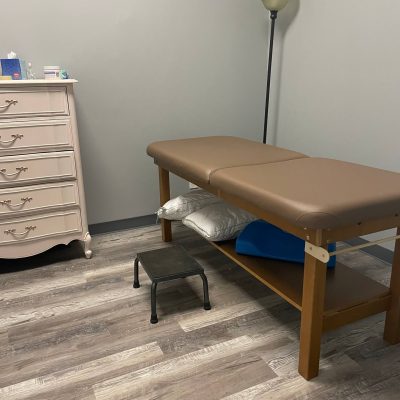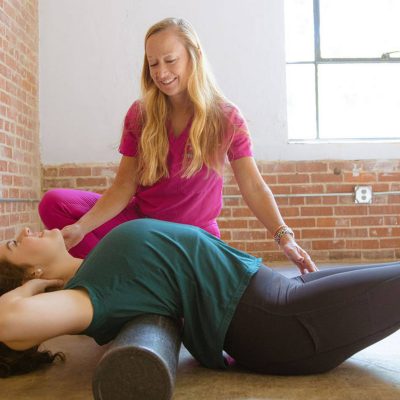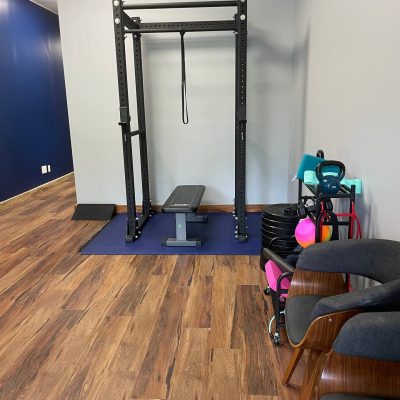By Samone Jackson, OTR/L, CLT
As a pelvic floor occupational therapist, my goal is to not only address the physical dysfunction of the pelvic floor but to treat the whole person—mind, body, and lifestyle. Pelvic floor therapy offers a holistic approach to improving quality of life, helping individuals regain control of essential bodily functions, reduce pain, and restore balance in various aspects of daily living. By focusing on how pelvic floor issues affect overall function, we can guide people through a journey toward greater comfort, emotional well-being, and the ability to fully engage in the activities that bring meaning and joy.
Understanding Pelvic Floor Dysfunction
The pelvic floor is a group of muscles that supports the bladder, bowel, and reproductive organs. These muscles play a crucial role in everyday functions such as urination, defecation, and sexual activity. When the pelvic floor is not functioning properly—whether due to weakness, overactivity, or poor coordination—individuals may experience symptoms like urinary or fecal incontinence, constipation, pelvic pain, or sexual dysfunction. As an occupational therapist, I view pelvic floor dysfunction not simply as a medical condition, but as an issue that impacts the ability to perform meaningful daily tasks and routines.
A Holistic Approach to Therapy
Pelvic floor therapy, from an occupational therapy perspective, emphasizes a holistic approach. We don’t just focus on the muscles; we take into account the entire body, lifestyle, and environment to understand how pelvic floor issues interfere with daily life. We look at the interconnectedness of physical health, emotional well-being, and social participation, creating individualized treatment plans that address both the functional and psychological aspects of pelvic floor dysfunction.
For example, a client experiencing pelvic pain may also struggle with stress, anxiety, or fatigue, which can exacerbate the pain. By integrating stress management techniques, mindfulness practices, and lifestyle adjustments into therapy, we aim to address these contributing factors, leading to more effective and sustainable outcomes. Holistic outcomes encompass more than just symptom relief; they involve restoring a person’s confidence, independence, and ability to engage in meaningful life activities.
Physical and Functional Benefits of Pelvic Floor Therapy
One of the primary goals of pelvic floor therapy is to restore proper muscle function. This involves strengthening weak muscles, relaxing tight muscles, and improving coordination between the pelvic floor and other muscle groups, such as the core and diaphragm. Pelvic floor dysfunction can manifest in a variety of ways, including incontinence, constipation, or sexual discomfort, all of which can impact day-to-day life in significant ways.
Incontinence, whether urinary or fecal, is one of the most common issues we address. Incontinence can lead to feelings of embarrassment, isolation, and even anxiety about participating in social activities. Through exercises that target pelvic floor strength and coordination, we help individuals regain control of these bodily functions. As a result, they can return to activities like traveling, socializing, or simply laughing and sneezing without the fear of leakage. This physical improvement directly impacts emotional well-being, reducing anxiety and improving self-esteem.
For those experiencing pelvic pain, therapy can help relieve discomfort that interferes with everyday activities like sitting, walking, or engaging in intimate relationships. Using techniques like manual therapy, stretching, and biofeedback, we teach clients how to relax and release tension in the pelvic muscles, which can alleviate chronic pain. This, in turn, can restore their ability to engage in work, hobbies, and exercise without discomfort.
Emotional and Psychological Benefits
The emotional and psychological toll of pelvic floor dysfunction is often overlooked. People who experience these issues may feel embarrassed, frustrated, or even depressed. They may withdraw from social activities, avoid intimacy, or feel isolated because they’re dealing with a condition that’s difficult to talk about. As occupational therapists, we understand how critical it is to address these emotional components in therapy.
Pelvic floor therapy empowers individuals by giving them tools to manage and improve their condition. When a person feels more in control of their body, they often experience a significant reduction in anxiety and depression. We incorporate relaxation techniques, breathing exercises, and mindfulness practices to help manage pain, stress, and anxiety. The ability to manage one’s symptoms effectively leads to greater confidence in engaging with life and participating in activities that matter to them.
We also focus on **self-care and self-management**, which are vital components of a holistic approach. Teaching clients to understand their bodies and take an active role in their treatment fosters independence and long-term success. This might involve learning how to manage triggers for pelvic pain, developing strategies for avoiding urinary urgency, or practicing specific exercises to maintain pelvic floor health.
Enhancing Sexual Health and Intimacy
Sexual health is often affected by pelvic floor dysfunction, whether it’s through pain during intercourse (dyspareunia), loss of sensation, or erectile dysfunction. These issues can strain relationships, reduce intimacy, and diminish an individual’s quality of life. Pelvic floor therapy helps address these challenges by improving muscle coordination, flexibility, and strength. We guide clients through tailored exercises and techniques that alleviate pain and improve blood flow, which can lead to more comfortable and fulfilling sexual experiences.
For many, addressing sexual health through pelvic floor therapy is not just about physical relief; it’s about restoring intimacy, communication, and emotional connection with partners. These holistic outcomes contribute to better relationships and an improved sense of well-being.
Integration into Daily Life and Occupations
Occupational therapy focuses on the person’s ability to perform and enjoy daily activities, or “occupations.” Pelvic floor dysfunction often limits participation in these activities, but through therapy, individuals can regain the ability to engage in what matters most to them. This might mean returning to exercise routines without fear of pain or leakage, enjoying outings with friends, or simply feeling comfortable and confident in one’s own body.
By integrating pelvic floor therapy into the broader context of someone’s daily life, we ensure that the improvements in muscle function and symptom management translate to enhanced participation in meaningful activities, from work to leisure to intimate relationships.
Conclusion
Pelvic floor therapy, through an occupational therapy lens, takes a holistic approach that addresses the whole person. By focusing on both the physical and emotional aspects of pelvic floor dysfunction, we can improve not only bodily functions but also restore a sense of well-being, confidence, and engagement in life’s meaningful activities. This comprehensive, individualized approach helps clients achieve long-lasting, holistic outcomes that lead to a richer, more fulfilling quality of life.







